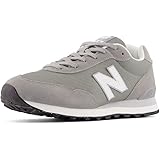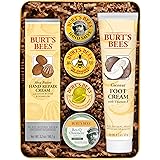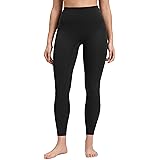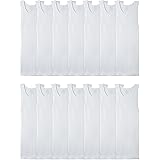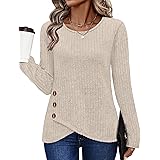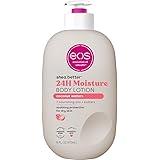While fashion trends constantly evolve, the allure of a beautifully crafted vintage piece remains timeless. In fact, research indicates a significant rise in vintage apparel appreciation, with mid-century designs like the beloved 1950s silhouette consistently capturing imaginations. The video above perfectly showcases this enduring appeal, featuring a stunning three-piece 1950s dress set, complete with a matching belt and bolero, discovered at an antique store.
Styling a vintage 1950s dress is an art form, a dance between historical accuracy and personal expression. It’s more than just putting on clothes; it’s about curating a complete look that tells a story. Let’s delve deeper into the nuances of styling such an exquisite find, building upon the excellent foundation laid out in the video, and exploring how each element contributes to the overall charm of 1950s dress styling.
The Foundation: The Unsung Hero of Vintage Silhouettes
Every magnificent structure needs a solid base, and a 1950s dress set is no different. The video correctly highlights the importance of petticoats, which are the architectural backbone for the era’s signature full skirt. Think of a petticoat as the scaffolding for your gown; without it, the elegant bell shape would simply fall flat.
These voluminous undergarments are crucial for achieving that iconic “New Look” silhouette popularized by designers like Christian Dior. They provide the necessary lift and swish, transforming a simple skirt into a theatrical cascade of fabric. Choosing the right petticoat — whether crinoline, tulle, or a combination — can dramatically alter the dress’s perceived volume and movement, much like a stage curtain opening to reveal the main act.
The Belt Debate: Defining Your Waist and Personal Style
The 1950s silhouette is often defined by a cinched waist, a celebration of feminine curves. The dress in the video comes with a matching belt, an obvious choice for era-appropriate styling. However, as noted in the video, sometimes personal preference can lead to unexpected, yet equally chic, outcomes.
A belt acts like a sartorial exclamation point, drawing attention to the narrowest part of the torso. While it can enhance the hourglass figure that was so celebrated, experimenting without it can sometimes create a more relaxed or even avant-garde interpretation of the 1950s dress. It’s a reminder that vintage fashion, much like a classic recipe, allows for personal tweaks and adjustments to suit individual taste.
Accessorizing with Intent: The Details That Sing
Accessories are the soul of any outfit, and in vintage styling, they are particularly potent. They bridge the gap between clothing and personal expression, adding layers of narrative and charm. The video offers a masterclass in selecting the perfect accompaniments for a 1950s dress set.
Jewelry: Patterned Hoops and Subtle Sparkle
The choice of patterned hoop earrings in the video is a testament to thoughtful coordination. They echo the design elements of the dress without overpowering it. When accessorizing a vintage 1950s dress, consider how jewelry can complement, rather than compete with, the garment’s inherent patterns and textures. Simple pearls or delicate brooches were also popular, offering a touch of refined elegance.
Footwear: Color Harmony and Era Authenticity
Shoes are more than just functional; they complete the ensemble. The dilemma between white and rose gold mules in the video beautifully illustrates the importance of subtle color matching. The decision for rose gold was astute, as it harmonized with the dress’s creamy background, a nuance easily missed at first glance. Mules were a popular choice in the 1950s, embodying effortless sophistication, much like a perfectly paired wine enhances a gourmet meal.
Gloves & Clutch: A Touch of Mid-Century Elegance
Creamy, see-through 1950s gloves and a 1930s clutch with a bakelite clasp elevate the outfit from merely “dressed” to “styled.” Gloves, once a daily staple for women, now serve as a powerful vintage signifier. They are the sartorial equivalent of a polite curtsy, adding grace and formality.
The bakelite clutch, a true antique, connects the outfit to a rich history. Bakelite, an early form of plastic, was revolutionary in its time, prized for its durability and vibrant colors. Finding such a piece is like discovering a hidden gem in a treasure chest, adding authenticity and a unique story to the overall look. It’s a testament to how mixing eras can create a harmonious, deeply personal statement.
Practicality Meets Panache: Protecting Your Look
Beyond aesthetics, practicality also played a role in 1950s fashion, especially concerning hair. The video’s final touch – protecting the hair when going outside – is a nod to a bygone era when elaborate hairstyles were common and maintaining them was paramount. This simple act reflects a larger philosophy of meticulous grooming and presentation.
Whether it’s a scarf, a hat, or a simple head covering, these elements were not just about fashion; they were about preserving one’s carefully coiffed appearance. It’s a practical consideration that adds an extra layer of authenticity to your 1950s dress styling, much like a finishing glaze adds depth and protection to a beautiful painting.
Ultimately, styling a 1950s dress set is about embracing a moment in time while making it uniquely yours. It’s an invitation to explore history, play with proportions, and revel in the joy of creating a truly special ensemble.



